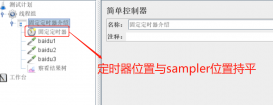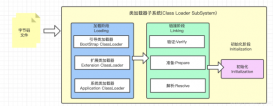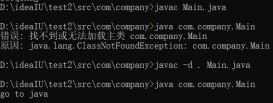一、MergedBeanDefinitionPostProcessor
1.1、postProcessMergedBeanDefinition
在Bean属性赋值前,缓存属性字段上的@Autowired和@Value注解信息。
|
1
2
3
4
5
6
|
public void postProcessMergedBeanDefinition(RootBeanDefinition beanDefinition, Class<?> beanType, String beanName) { //1.1.1 查询属性或方法上有@Value和@Autowired注解的元素 InjectionMetadata metadata = findAutowiringMetadata(beanName, beanType, null); //1.1.2 检查元数据信息 metadata.checkConfigMembers(beanDefinition);} |
1.1.1 findAutowiringMetadata 查询属性或方法上有@Value和@Autowired注解的元素
|
1
2
3
4
5
6
7
8
9
10
11
12
13
14
15
16
17
18
19
20
21
22
23
|
private InjectionMetadata findAutowiringMetadata(String beanName, Class<?> clazz, @Nullable PropertyValues pvs) { // Fall back to class name as cache key, for backwards compatibility with custom callers. //获取Bean名称作为缓存key String cacheKey = (StringUtils.hasLength(beanName) ? beanName : clazz.getName()); // Quick check on the concurrent map first, with minimal locking. //使用双重检查机制获取缓存 InjectionMetadata metadata = this.injectionMetadataCache.get(cacheKey); //判断是否有元数据 if (InjectionMetadata.needsRefresh(metadata, clazz)) { synchronized (this.injectionMetadataCache) { metadata = this.injectionMetadataCache.get(cacheKey); if (InjectionMetadata.needsRefresh(metadata, clazz)) { if (metadata != null) { metadata.clear(pvs); } //构建元数据 metadata = buildAutowiringMetadata(clazz); this.injectionMetadataCache.put(cacheKey, metadata); } } } return metadata;} |
这个 do-while 循环是用来一步一步往父类上爬的(可以看到这个循环体的最后一行是获取父类,判断条件是判断是否爬到了 Object)
|
1
2
3
4
5
6
7
8
9
10
11
12
13
14
15
16
17
18
19
20
21
22
23
24
25
26
27
28
29
30
31
32
33
34
35
36
37
38
39
40
41
42
43
44
45
46
47
48
49
50
51
52
53
54
55
|
private InjectionMetadata buildAutowiringMetadata(final Class<?> clazz) { // 判断是不是候选者类,比如说类名是以 java.开头的则不是候选者类 Order的实现类也不是候选者类 // 但是如果this.autowiredAnnotationTypes 中有以java.开头的注解就返回true了 if (!AnnotationUtils.isCandidateClass(clazz, this.autowiredAnnotationTypes)) { return InjectionMetadata.EMPTY; } List<InjectionMetadata.InjectedElement> elements = new ArrayList<>(); Class<?> targetClass = clazz; do { final List<InjectionMetadata.InjectedElement> currElements = new ArrayList<>(); // 循环获取类上的属性,如果类属性上有@Value和@Autowired包装成AutowiredFieldElement放入结果集 ReflectionUtils.doWithLocalFields(targetClass, field -> { MergedAnnotation<?> ann = findAutowiredAnnotation(field); if (ann != null) { if (Modifier.isStatic(field.getModifiers())) { if (logger.isInfoEnabled()) { logger.info("Autowired annotation is not supported on static fields: " + field); } return; } boolean required = determineRequiredStatus(ann); currElements.add(new AutowiredFieldElement(field, required)); } }); // 循环获取类上的方法,如果类方法上有@Value和@Autowired包装成AutowiredMethodElement放入结果集 ReflectionUtils.doWithLocalMethods(targetClass, method -> { Method bridgedMethod = BridgeMethodResolver.findBridgedMethod(method); if (!BridgeMethodResolver.isVisibilityBridgeMethodPair(method, bridgedMethod)) { return; } MergedAnnotation<?> ann = findAutowiredAnnotation(bridgedMethod); if (ann != null && method.equals(ClassUtils.getMostSpecificMethod(method, clazz))) { if (Modifier.isStatic(method.getModifiers())) { if (logger.isInfoEnabled()) { logger.info("Autowired annotation is not supported on static methods: " + method); } return; } if (method.getParameterCount() == 0) { if (logger.isInfoEnabled()) { logger.info("Autowired annotation should only be used on methods with parameters: " + method); } } boolean required = determineRequiredStatus(ann); PropertyDescriptor pd = BeanUtils.findPropertyForMethod(bridgedMethod, clazz); currElements.add(new AutowiredMethodElement(method, required, pd)); } }); elements.addAll(0, currElements); targetClass = targetClass.getSuperclass(); } while (targetClass != null && targetClass != Object.class); return InjectionMetadata.forElements(elements, clazz);} |
1.1.2 检查元数据信息
检查是否有重复的元数据,去重处理,如一个属性上既有@Autowired注解,又有@Resource注解 。只使用一种方式进行注入,由于@Resource先进行解析,所以会选择@Resource的方式
|
1
2
3
4
5
6
7
8
9
10
11
12
13
14
|
public void checkConfigMembers(RootBeanDefinition beanDefinition) { Set<InjectedElement> checkedElements = new LinkedHashSet<>(this.injectedElements.size()); for (InjectedElement element : this.injectedElements) { Member member = element.getMember(); if (!beanDefinition.isExternallyManagedConfigMember(member)) { beanDefinition.registerExternallyManagedConfigMember(member); checkedElements.add(element); if (logger.isTraceEnabled()) { logger.trace("Registered injected element on class [" + this.targetClass.getName() + "]: " + element); } } } this.checkedElements = checkedElements;} |
二、SmartInstantiationAwareBeanPostProcessor
2.1、determineCandidateConstructors
在bean实例化前选择@Autowired注解的构造函数,同时注入属性,从而完成自定义构造函数的选择。
|
1
2
3
4
5
6
7
8
9
10
11
12
13
14
15
16
17
18
19
20
21
22
23
24
25
26
27
28
29
30
31
32
33
34
35
36
37
38
39
40
41
42
43
44
45
46
47
48
49
50
51
52
53
54
55
56
57
58
59
60
61
62
63
64
65
66
67
68
69
70
71
72
73
74
75
76
77
78
79
80
81
82
83
84
85
86
87
88
89
90
91
92
93
94
95
96
97
98
99
100
101
102
103
104
105
106
107
108
109
110
111
112
113
114
115
116
117
118
119
120
121
122
123
124
125
126
127
128
129
130
131
132
133
134
135
136
137
138
139
140
141
142
143
144
|
public Constructor<?>[] determineCandidateConstructors(Class<?> beanClass, final String beanName) throws BeanCreationException { // Let's check for lookup methods here... if (!this.lookupMethodsChecked.contains(beanName)) { try { ReflectionUtils.doWithMethods(beanClass, method -> { Lookup lookup = method.getAnnotation(Lookup.class); if (lookup != null) { Assert.state(this.beanFactory != null, "No BeanFactory available"); LookupOverride override = new LookupOverride(method, lookup.value()); try { RootBeanDefinition mbd = (RootBeanDefinition) this.beanFactory.getMergedBeanDefinition(beanName); mbd.getMethodOverrides().addOverride(override); } catch (NoSuchBeanDefinitionException ex) { throw new BeanCreationException(beanName, "Cannot apply @Lookup to beans without corresponding bean definition"); } } }); } catch (IllegalStateException ex) { throw new BeanCreationException(beanName, "Lookup method resolution failed", ex); } this.lookupMethodsChecked.add(beanName); } // Quick check on the concurrent map first, with minimal locking. Constructor<?>[] candidateConstructors = this.candidateConstructorsCache.get(beanClass); if (candidateConstructors == null) { // Fully synchronized resolution now... synchronized (this.candidateConstructorsCache) { candidateConstructors = this.candidateConstructorsCache.get(beanClass); if (candidateConstructors == null) { Constructor<?>[] rawCandidates; try { //反射获取所有构造函数 rawCandidates = beanClass.getDeclaredConstructors(); } catch (Throwable ex) { throw new BeanCreationException(beanName, "Resolution of declared constructors on bean Class [" + beanClass.getName() + "] from ClassLoader [" + beanClass.getClassLoader() + "] failed", ex); } //候选构造方法 List<Constructor<?>> candidates = new ArrayList<>(rawCandidates.length); Constructor<?> requiredConstructor = null; Constructor<?> defaultConstructor = null; //这个貌似是 Kotlin 上用的, 不用管它 Constructor<?> primaryConstructor = BeanUtils.findPrimaryConstructor(beanClass); int nonSyntheticConstructors = 0; //遍历这些构造函数 for (Constructor<?> candidate : rawCandidates) { //判断构造方法是否是合成的 if (!candidate.isSynthetic()) { nonSyntheticConstructors++; } else if (primaryConstructor != null) { continue; } //查看是否有 @Autowired 注解 //如果有多个构造方法, 可以通过标注 @Autowired 的方式来指定使用哪个构造方法 AnnotationAttributes ann = findAutowiredAnnotation(candidate); if (ann == null) { Class<?> userClass = ClassUtils.getUserClass(beanClass); if (userClass != beanClass) { try { Constructor<?> superCtor = userClass.getDeclaredConstructor(candidate.getParameterTypes()); ann = findAutowiredAnnotation(superCtor); } catch (NoSuchMethodException ex) { // Simply proceed, no equivalent superclass constructor found... } } } //有 @Autowired 的情况 if (ann != null) { if (requiredConstructor != null) { throw new BeanCreationException(beanName, "Invalid autowire-marked constructor: " + candidate + ". Found constructor with 'required' Autowired annotation already: " + requiredConstructor); } boolean required = determineRequiredStatus(ann); if (required) { if (!candidates.isEmpty()) { throw new BeanCreationException(beanName, "Invalid autowire-marked constructors: " + candidates + ". Found constructor with 'required' Autowired annotation: " + candidate); } requiredConstructor = candidate; } candidates.add(candidate); } //无参构造函数的情况 else if (candidate.getParameterCount() == 0) { //构造函数没有参数, 则设置为默认的构造函数 defaultConstructor = candidate; } } //到这里, 已经循环完了所有的构造方法 //候选者不为空时 if (!candidates.isEmpty()) { // Add default constructor to list of optional constructors, as fallback. if (requiredConstructor == null) { if (defaultConstructor != null) { candidates.add(defaultConstructor); } else if (candidates.size() == 1 && logger.isInfoEnabled()) { logger.info("Inconsistent constructor declaration on bean with name '" + beanName + "': single autowire-marked constructor flagged as optional - " + "this constructor is effectively required since there is no " + "default constructor to fall back to: " + candidates.get(0)); } } candidateConstructors = candidates.toArray(new Constructor<?>[0]); } //类的构造方法只有1个, 且该构造方法有多个参数 else if (rawCandidates.length == 1 && rawCandidates[0].getParameterCount() > 0) { candidateConstructors = new Constructor<?>[] {rawCandidates[0]}; } //这里不会进, 因为 primaryConstructor = null else if (nonSyntheticConstructors == 2 && primaryConstructor != null && defaultConstructor != null && !primaryConstructor.equals(defaultConstructor)) { candidateConstructors = new Constructor<?>[] {primaryConstructor, defaultConstructor}; } //这里也不会进, 因为 primaryConstructor = null else if (nonSyntheticConstructors == 1 && primaryConstructor != null) { candidateConstructors = new Constructor<?>[] {primaryConstructor}; } else { //如果方法进了这里, 就是没找到合适的构造方法 //1. 类定义了多个构造方法, 且没有 @Autowired , 则有可能会进这里 candidateConstructors = new Constructor<?>[0]; } this.candidateConstructorsCache.put(beanClass, candidateConstructors); } } } //这里如果没找到, 则会返回 null, 而不会返回空数组 return (candidateConstructors.length > 0 ? candidateConstructors : null); } |
遍历构造方法:
- 只有一个无参构造方法, 则返回null
- 只有一个有参构造方法, 则返回这个构造方法
- 有多个构造方法且没有@Autowired, 此时spring则会蒙圈了, 不知道使用哪一个了。这里的后置处理器智能选择构造方法后置处理器。当选择不了的时候, 干脆返回 null
- 有多个构造方法, 且在其中一个方法上标注了 @Autowired , 则会返回这个标注的构造方法
- 有多个构造方法, 且在多个方法上标注了@Autowired, 则spring会抛出异常, Spring会认为, 你指定了几个给我, 是不是你弄错了
注意:
这地方有个问题需要注意一下, 如果你写了多个构造方法, 且没有写 无参构造方法, 那么此处返回null,
在回到 createBeanInstance 方法中, 如果不能走 autowireConstructor(), 而走到 instantiateBean() 中去的话, 会报错的,因为类已经没有无参构造函数了。
以上就是AutowiredAnnotationBeanPostProcessor源码解析的详细内容,更多关于AutowiredAnnotationBeanPostProcessor的资料请关注服务器之家其它相关文章!
原文链接:https://juejin.cn/post/7204670801243684922

















